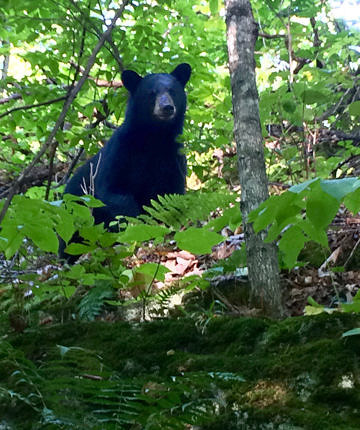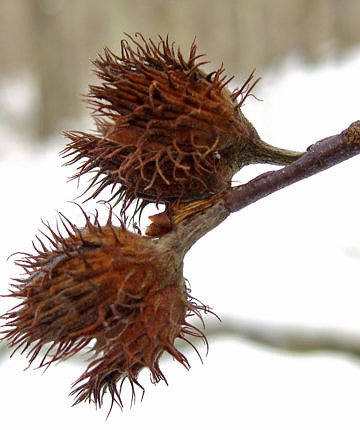
The Black Bear
We Met at "the Beech" in Vermont
The bear is ambling toward me, snout low to the ground, not yet picking up my scent. I’m crouched low and still in the ravine. He’s rummaging in the leaf litter, moving haltingly like a person scouring the ground for a lost set of keys. Nothing in the woods is so jet-black and round: the ears, the little tail, the dense winter-ready body. At last he lifts his chin high to sniff the air — and me.
Neither of us should be surprised at the encounter. We’re here for the same thing — a tree: American beech.
It’s late September in Richmond, Vermont, where bears are on the hunt for ripe beechnuts. With more protein and fat than acorns, the nuts are fuel for the coming winter. Each fall bears haul themselves up beech trees, leaving the pale-gray bark peppered with claw marks. In the canopy they sit and gather their loot.
I’m on the hunt for a parasitic plant that grows exclusively below American beech. Beechdrops run an underground sugaring operation by tapping into beech roots and siphoning off carbohydrates for their own use. There’s nothing green about them, no need for chlorophyll since they never photosynthesize. The ghostly plants could spend their entire lives without seeing the sun.
The trees don’t seem to be bothered by the pallid plants sipping from their roots, nor by the bears that scale their trunks. All of us who lack photosynthetic machinery must glean our sugars from the world around us. We reach out hungrily with hands and claws and roots. The bear and I, each driven by a different hunger, have unwittingly followed the same trees to our meeting place.
The beechnut crop, which varies from year to year, is sparse this fall. But oaks tower around me, their acorns feeding the turkeys, squirrels, songbirds, and deer. I’ve walked past a dozen piles of bear scat, all of it full of acorn meat. I suppose the bears are giving back to the trees in this way, returning nutrients to soil.
The bear stands up on his back legs and sniffs some more, opening his mouth slightly to taste the air. I’m close enough to see the pink of his tongue. Then he drops to the ground on heavy paws and runs off to find another place where the oak and beech trees grow.
Before leaving the ravine I pluck a pale sprig of beechdrops for my plant press. When winter comes and the bears are asleep in their dens, the preserved flowers will remind me that the world is a tangle of fine roots connecting everything together, even the most unlikely pairs. Neighbors in the autumnal woods, the beechdrop and the bear are linked by trees. Go looking for one and find them both, feasting together in the shade of a beech.
Grace Glynn is a graduate student in the Field Naturalist Program at the University of Vermont. Email Grace » Click any of the images below for a bigger view.





What an amazing experience!
This was a wonderful read. Beautiful writing style.
Grace, u write beautifully I am reminded much of your mom and I know how truly proud of you she is I look forward to reading more from you in the future !!
What a delightful article! It reminds us of the beauty of the natural world n how we are all interconnected. Good for the soul
Terrific, Grace!
I guess ‘Life’s A Beech’, especially if you don’t get munched on by a plant-hungry bear!
~Dodger